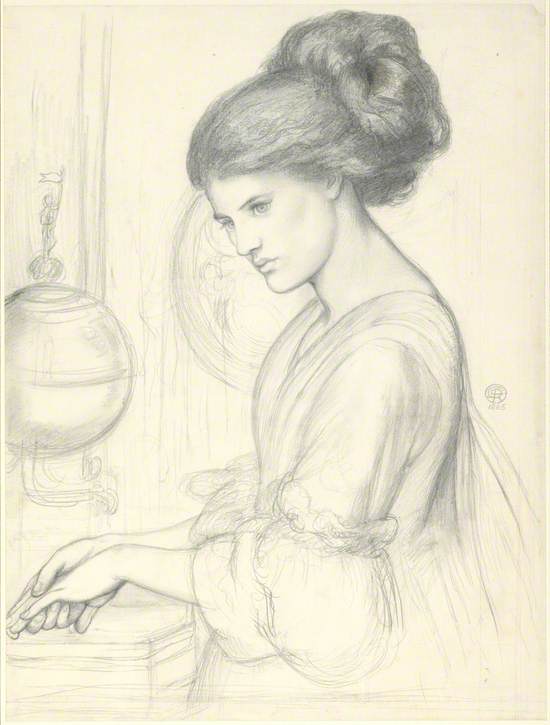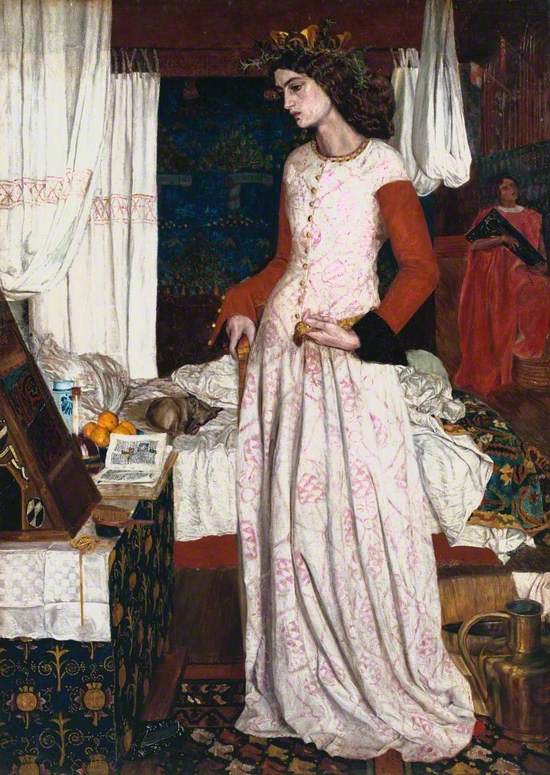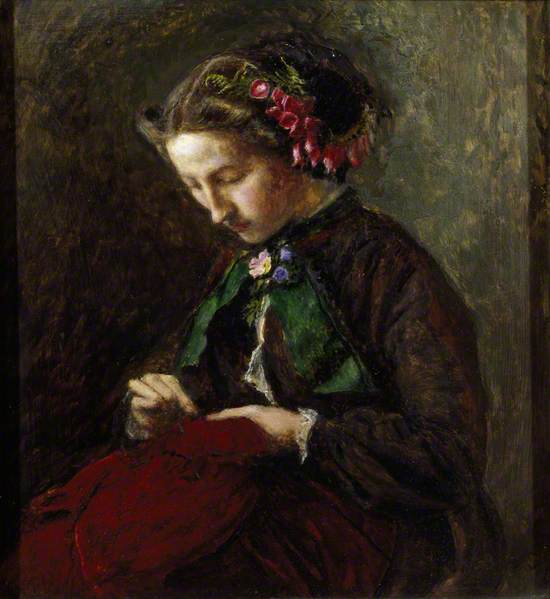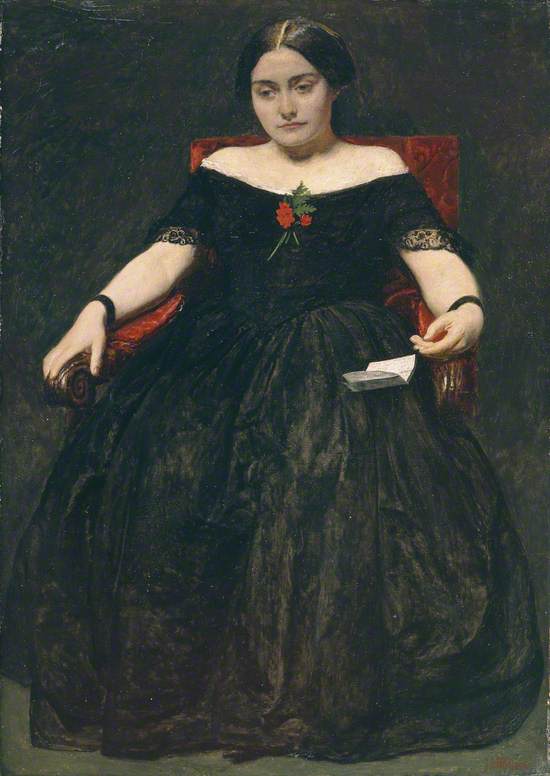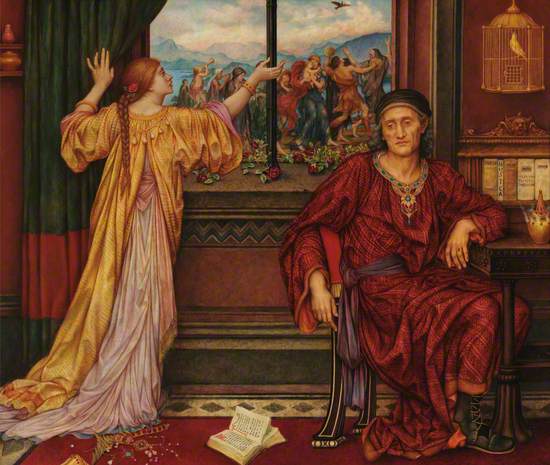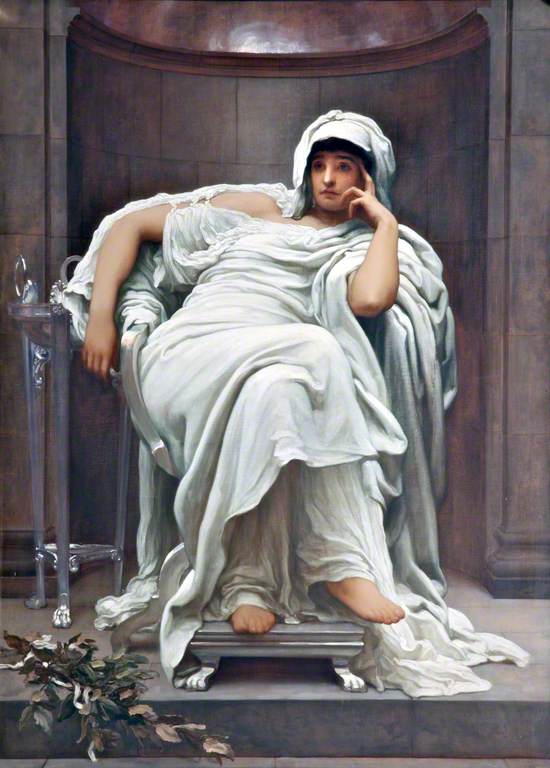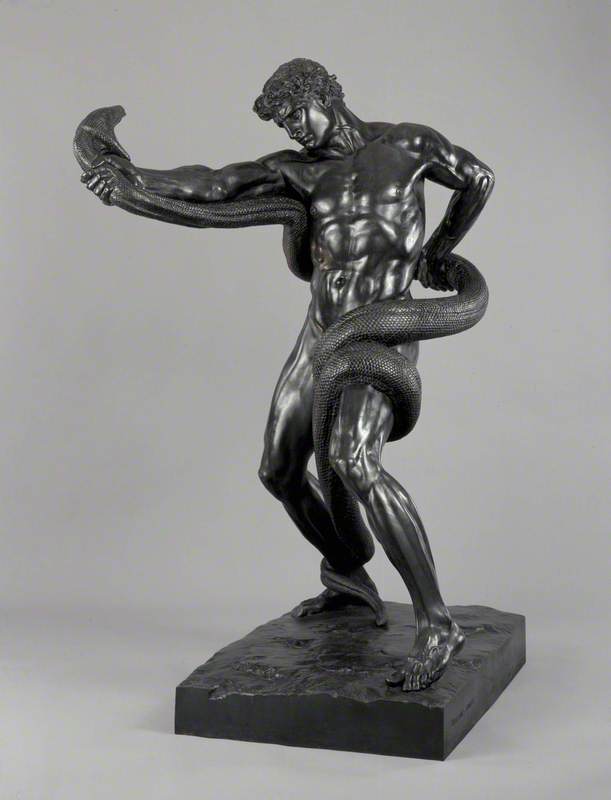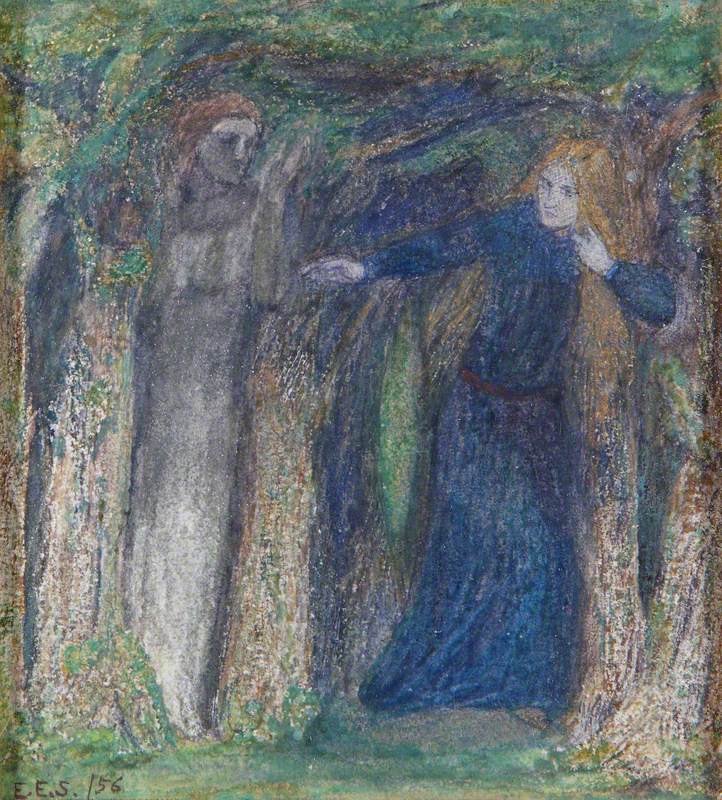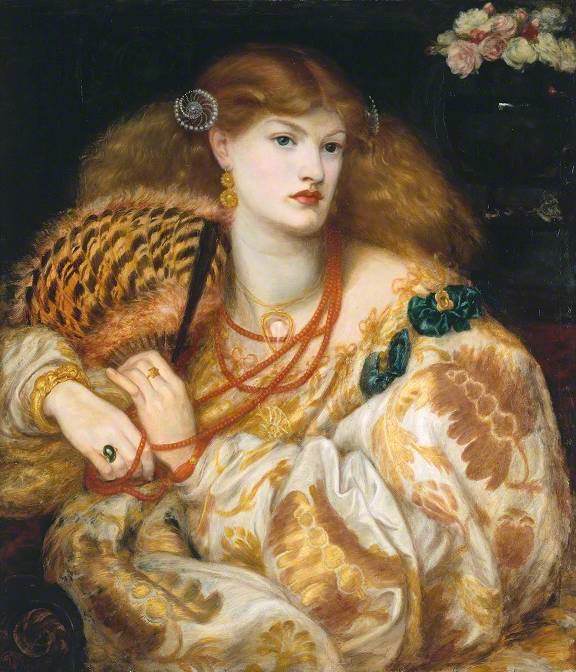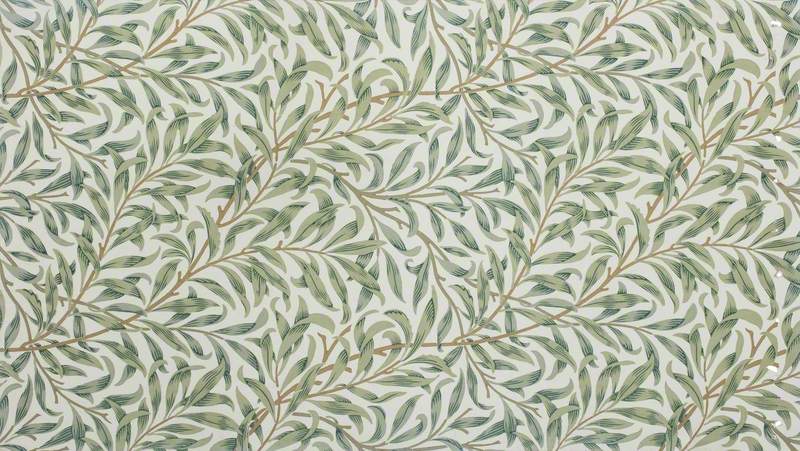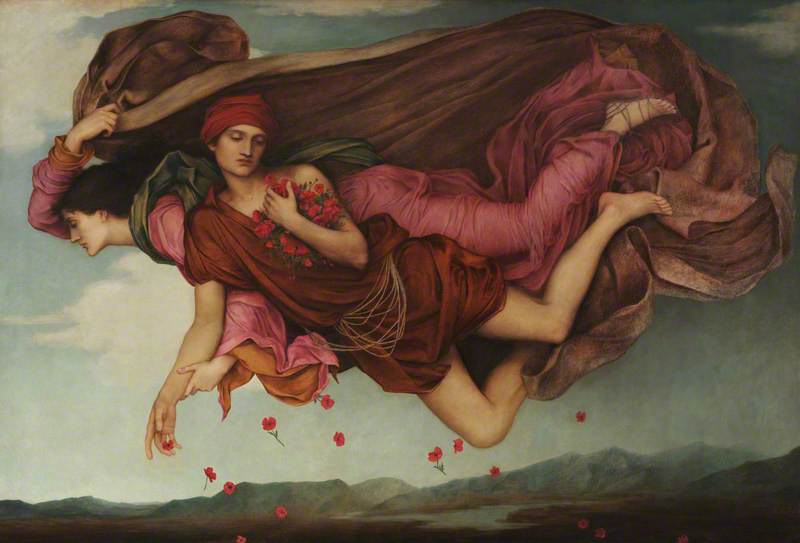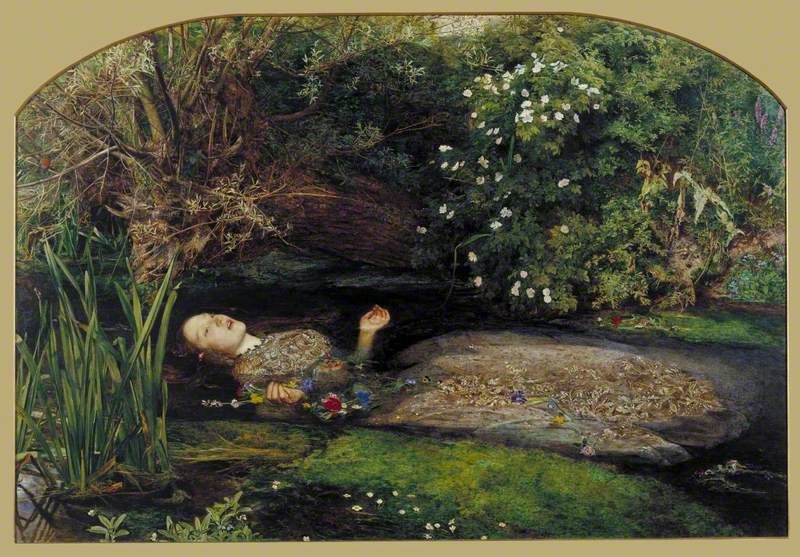The Pre-Raphaelites are known for their depiction of the female form, often in romantic and epic settings. Mainstream Victorian art portrayed religious and classical figures as irreproachable and divine. In this curation we will look at how the Pre-Raphaelites humanised their subjects, taking them from the divine to an earthly beauty.
Another change the Pre-Raphaelites ushered in was the depiction of epic events through smaller moments. In such uncertain times, we can turn to the Pre-Raphaelites for beautified escapism intertwined with relatable ennui. In this collection we will look at some of the quieter moments in Pre-Raphaelite art, often finding our heroines in a moment of reflection or even boredom.
By Molly Fennelly, Volunteer
Study for 'Washing Hands', Dante Gabriel Rossetti
A familiar scene to everyone, as the importance of hand-washing has been reiterated throughout the COVID-19 pandemic. This is a study for a later painting that included a male figure in the background, but our focus remains on the female hand-washer. Rossetti said of this work:'I mean it to represent that state of a courtship when both of the parties have come to see in reality that it will never do, but when the lady, I think, is generally the first to have the strength to act on such knowledge. It is all over, in my picture, and she is washing her hands of it'. Jane Morris, wife of William Morris, was the model for this study. It was made around the time Jane and Rossetti started their affair.
Dante Gabriel Rossetti (1828–1882)
Graphite on paper
H 47 x W 34.9 cm
The Fitzwilliam Museum
La Belle Iseult, William Morris
Pre-Raphaelite muse, Jane Burden (later Morris) is depicted in the role of the melancholic Iseult separated from her lover Tristan. In this legendary love story, Morris has chosen to depict not a violent or overly saturated love scene, but a quiet moment of reflection for Iseult, who contemplatively arranges her belt. We see her in a moment away from the main narrative of the story. There is a naturalism to her unmade bed, a pet dog curled asleep at the top of her crumpled sheets and an open book discarded on her nightstand. Jane and William Morris married in the year following this picture’s completion. This is the only known easel painting that William Morris produced.
Lady Clare, Elizabeth Siddal
Elizabeth Siddal is one of the most famous of the Pre-Raphaelite models. Her acceptance into the Pre-Raphaelite circle was helped by her own interest in art, and she started to create her own pieces. Influenced by medieval illustrations and manuscripts, her figures are often posed dramatically. In this piece we see Lady Clare in a domestic setting, pushing her mother aside as she goes to tell her betrothed she has unwittingly been lying; she is not from the same social class as him. The mother begs her daughter not to make such a mistake, believing this admission will end the couple’s engagement. This would have been a very personal topic for Siddal, who was of a lower class than her lover Rossetti.
Elizabeth Eleanor Siddal (1829–1862)
Pen & ink, brown wash & black wash over graphite on paper
H 14.9 x W 11.5 cm
The Fitzwilliam Museum
Euphemia 'Effie' Chalmers Gray, Mrs John Ruskin (1828-1898), later Lady Millais, with Foxgloves in her Hair (The Foxglove), John Millais
John Millais has chosen to capture Effie Gray in a quiet moment of focused sewing. The colours in particular are very eye-catching, with the extraordinary pinks of the foxgloves in Effie's hair perhaps highlighting an undercurrent of wild nature beneath a demure scene. In the language of flowers foxgloves denote insincerity, and perhaps in this painting hint at the unhappiness between Effie and her then husband John Ruskin, who commissioned the piece. After finishing the portrait Millais told Effie he could not bear to part with the painting and kept it rather than give it to Ruskin. Beneath this quiet piece of seemingly domestic tranquility lies a far more complicated story of discord and desire.
John Everett Millais (1829–1896)
Oil on millboard
H 22.5 x W 20.5 cm
National Trust, Wightwick Manor
Wandering Thoughts, John Everett Millais (1829–1896)
This unnamed woman stares contemplatively outwards, her eyes cast down as a letter slips from her hand. ‘We can only guess at its contents – it may have stirred an intense memory or thoughts of a lost love. This moment feels familiar to our present state as our day-to-day activities and news from friends and family have slowed down and taken new forms.
John Everett Millais (1829–1896)
Oil on canvas
H 35.2 x W 24.9 cm
Manchester Art Gallery
The Gilded Cage, Evelyn De Morgan (1855–1919)
Evelyn De Morgan often depicted scenes of female restriction. In The Gilded Cage we see two sumptuously dressed figures, probably a husband and wife, in an opulent domestic setting. The wife is animated and distressed at being kept inside. De Morgan mirrors her wealth and distress in the desperately singing bird, trapped in an ornate cage. Both are in contrast to their counterparts outside, the bird to the free-flying bird in the sky and the wife to the joyous revellers dancing and singing. The husband stares resolutely in the opposite direction, ignoring both his wife's and the bird's distress. The message is clear. Today, the depiction of longing for freedom of the outside resonates as many struggle with 2020 lockdown restrictions.
Evelyn De Morgan (1855–1919)
Oil on canvas
H 910 x W 108.7 cm
De Morgan Collection
Fatidica, Frederic Leighton
Leighton's association with the Pre-Raphaelites is evident in the uneasy pose he presents Fatidica in. Her 'almost ungainly posture' drew comment from critics who could not reconcile classical figures shown in such an ordinary pose. As is the pattern of the pieces in this curation, the character is lost in thought, not in the throws of action. 'Fatidica' translates as 'fate’, opening the possibility that our seated woman is one of the Moirai. As her bored stare goes off the canvas the viewer has the unsettling feeling she is looking at something beyond and unknown to us. Our fate perhaps.
